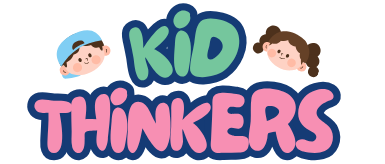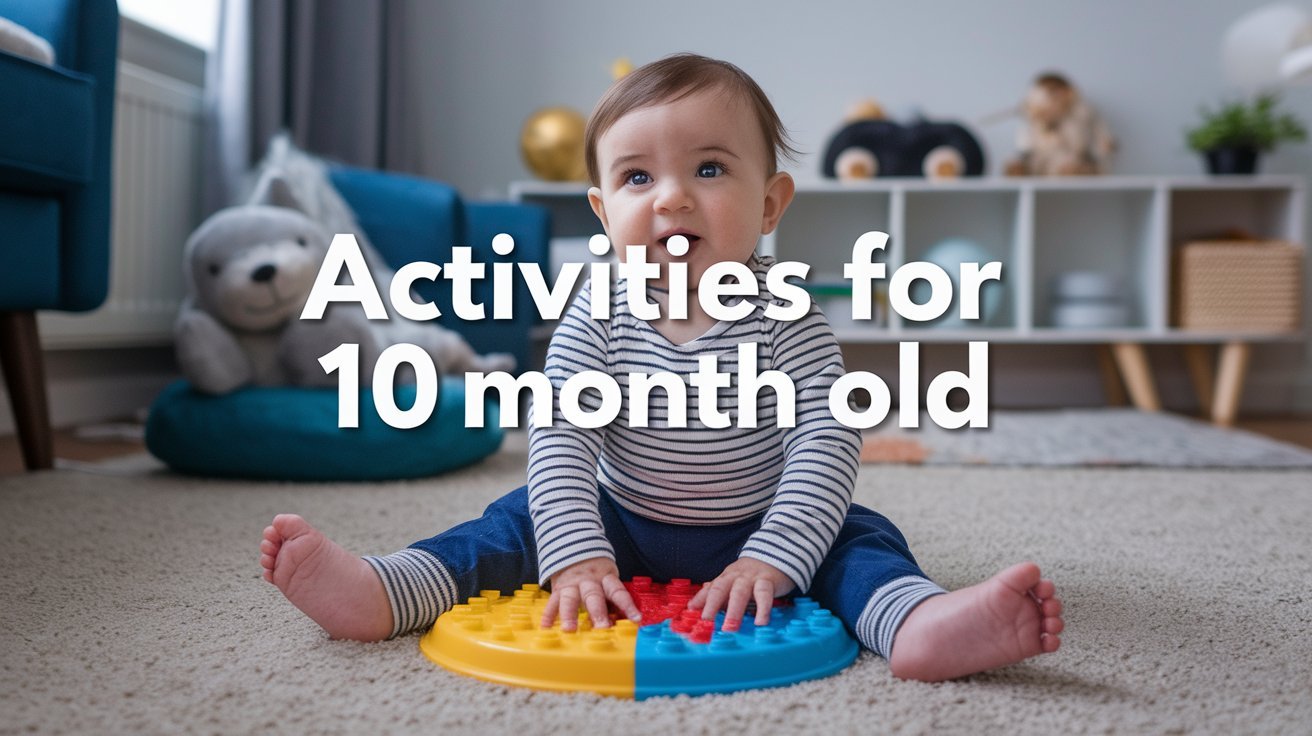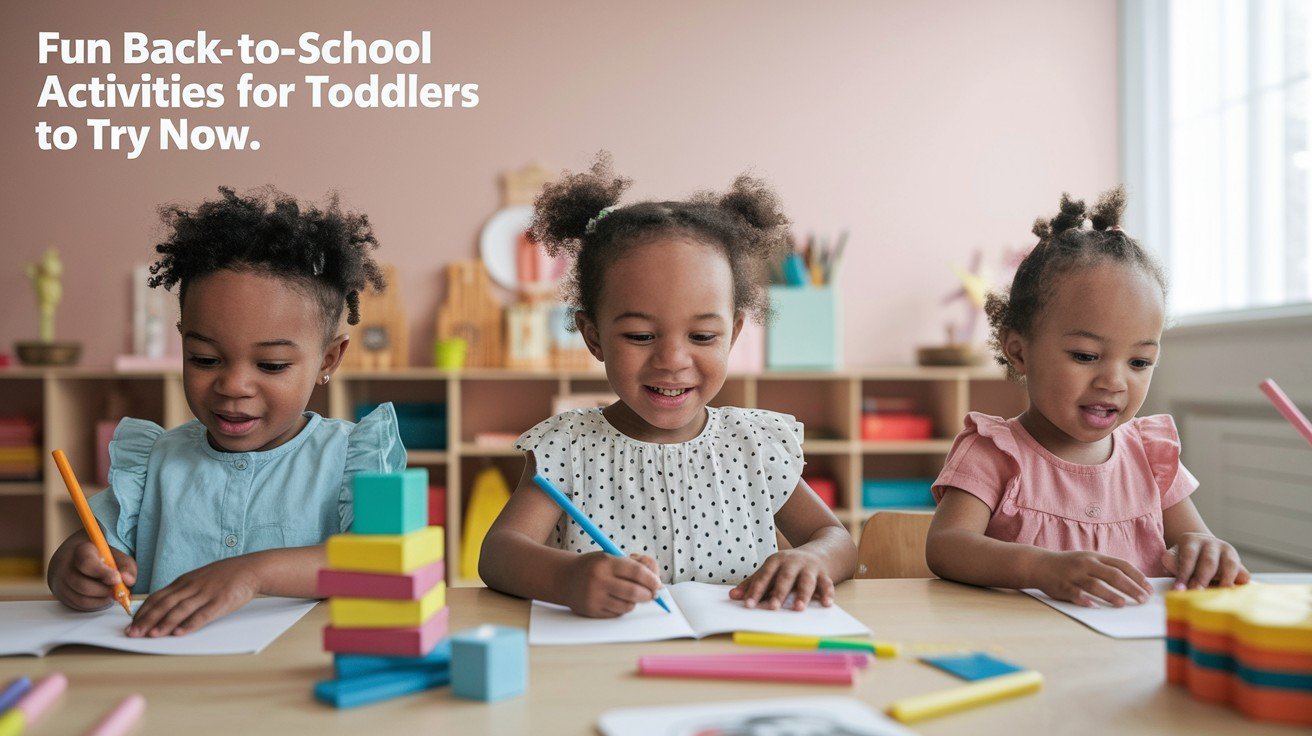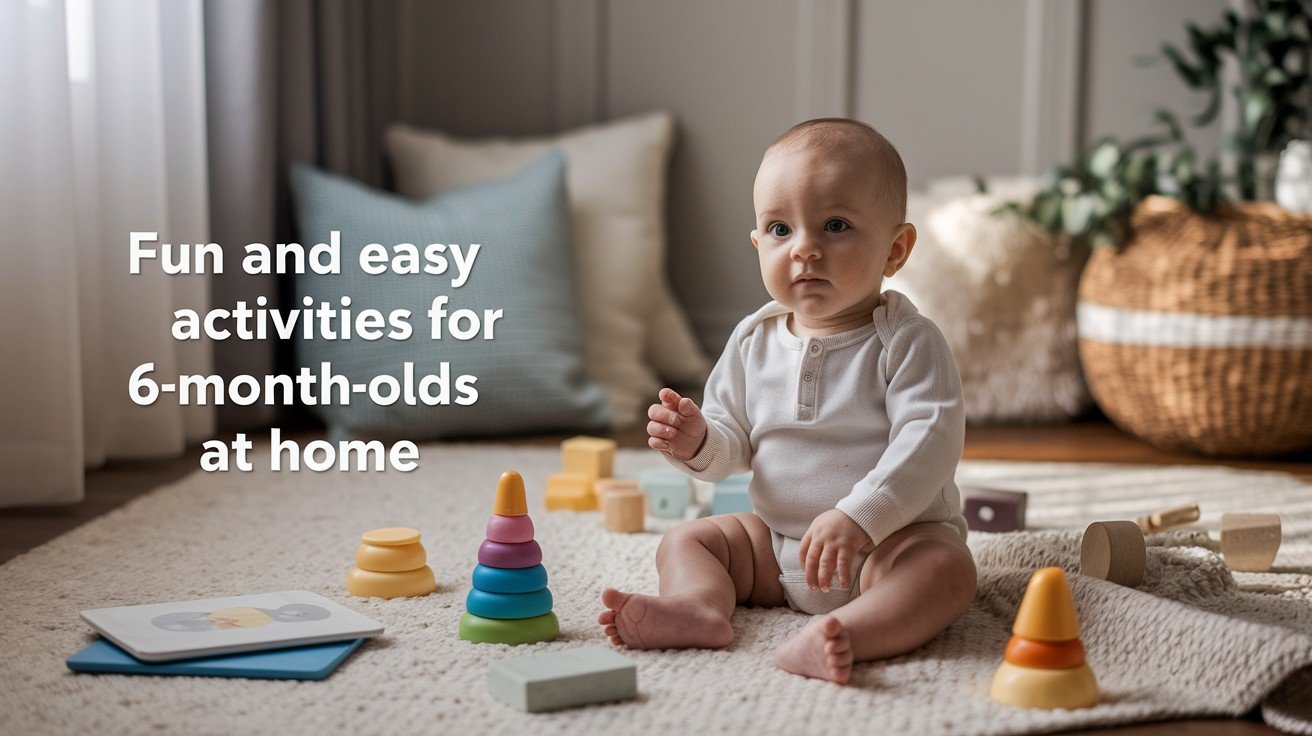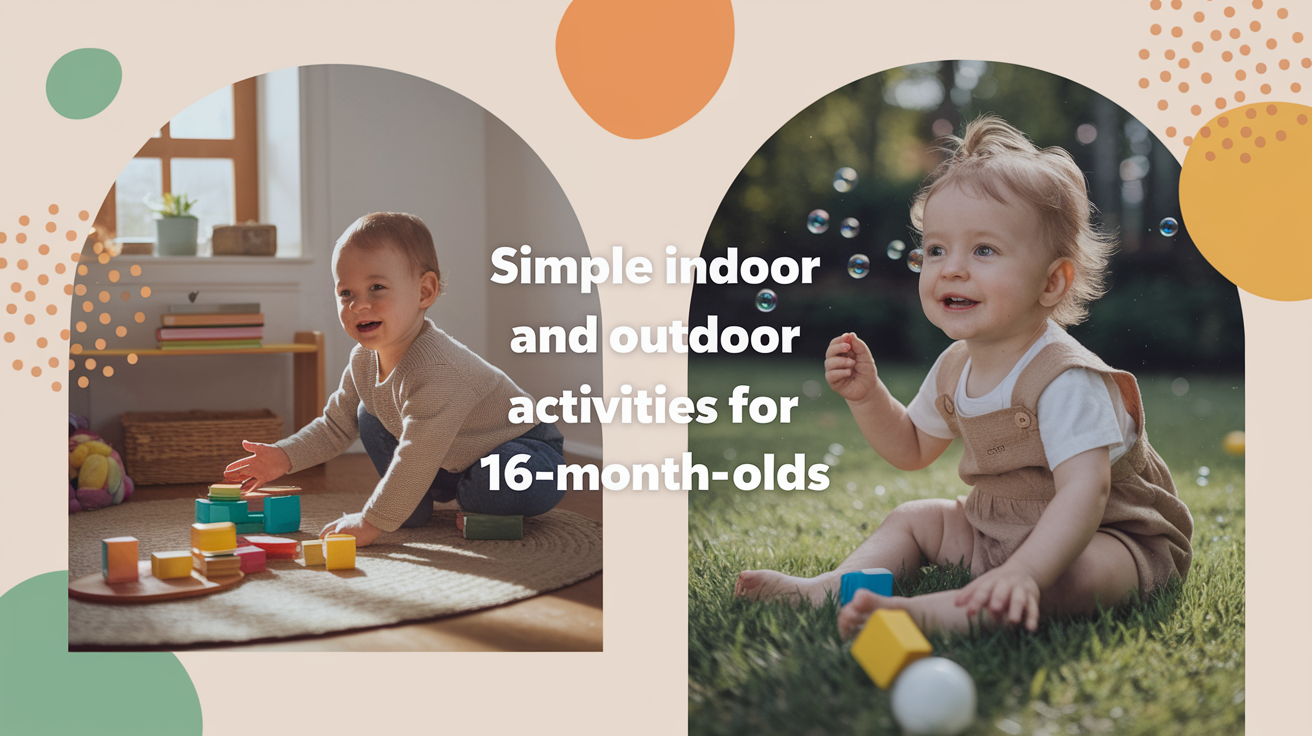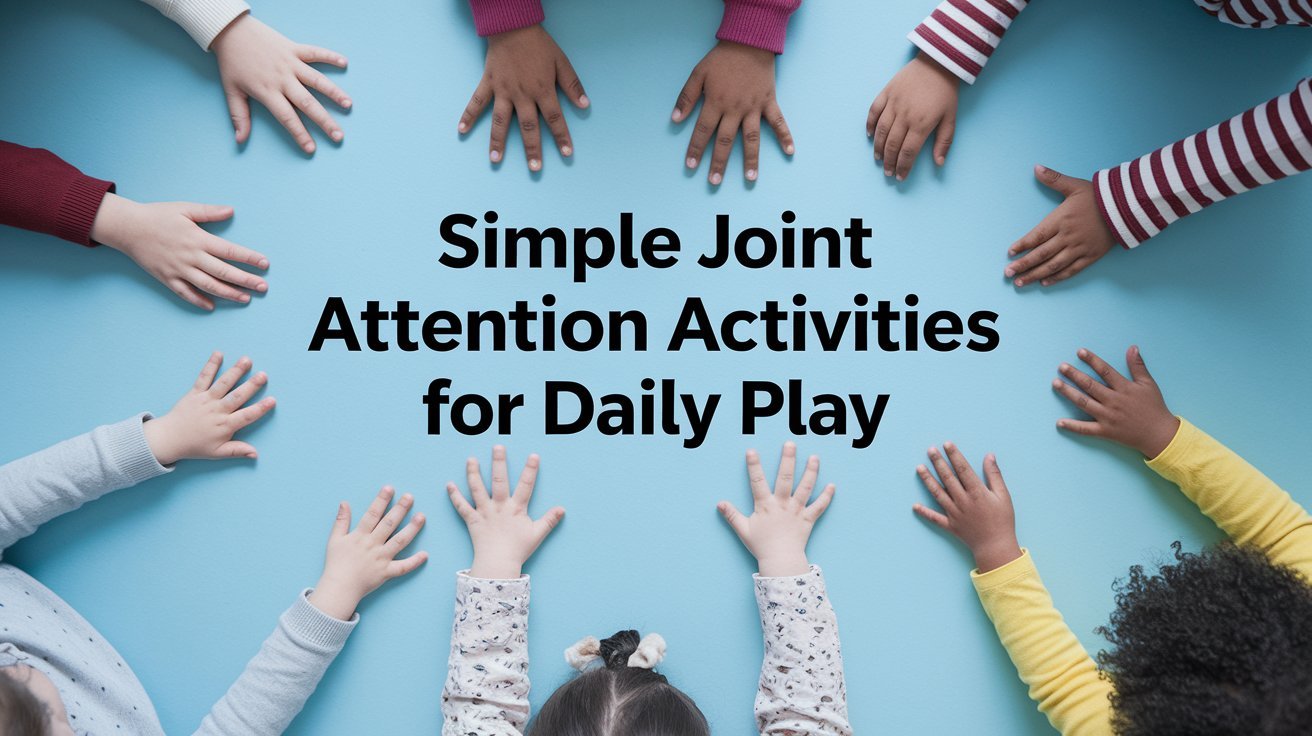Your 10-month-old modifies every day now. Your baby might crawl right across to that room now, stand up simply by pulling, or even wobble along in those initial steps, activities, and interests involved during this period.
At this age, babies have a desire to taste new textures via touching everything as well as figuring out how objects work. They learn while playing constantly now. Your small child builds problem-solving skills, strength, and coordination without knowing it.
The good news? You don’t need fancy toys or setups of complicated setups. Simple household items are often included within. They are included in the top learning tools. Objects of nature can make tools that are fine for learning. They also provide added advantages. Actual pastimes for babies of 10 months old stress experiences suiting exploration desire.
Fun and Engaging Activities for Your 10-Month-Old
These hands-on activities help your baby learn through touch, sight, and movement while building important skills.
Nature Sensory Corner
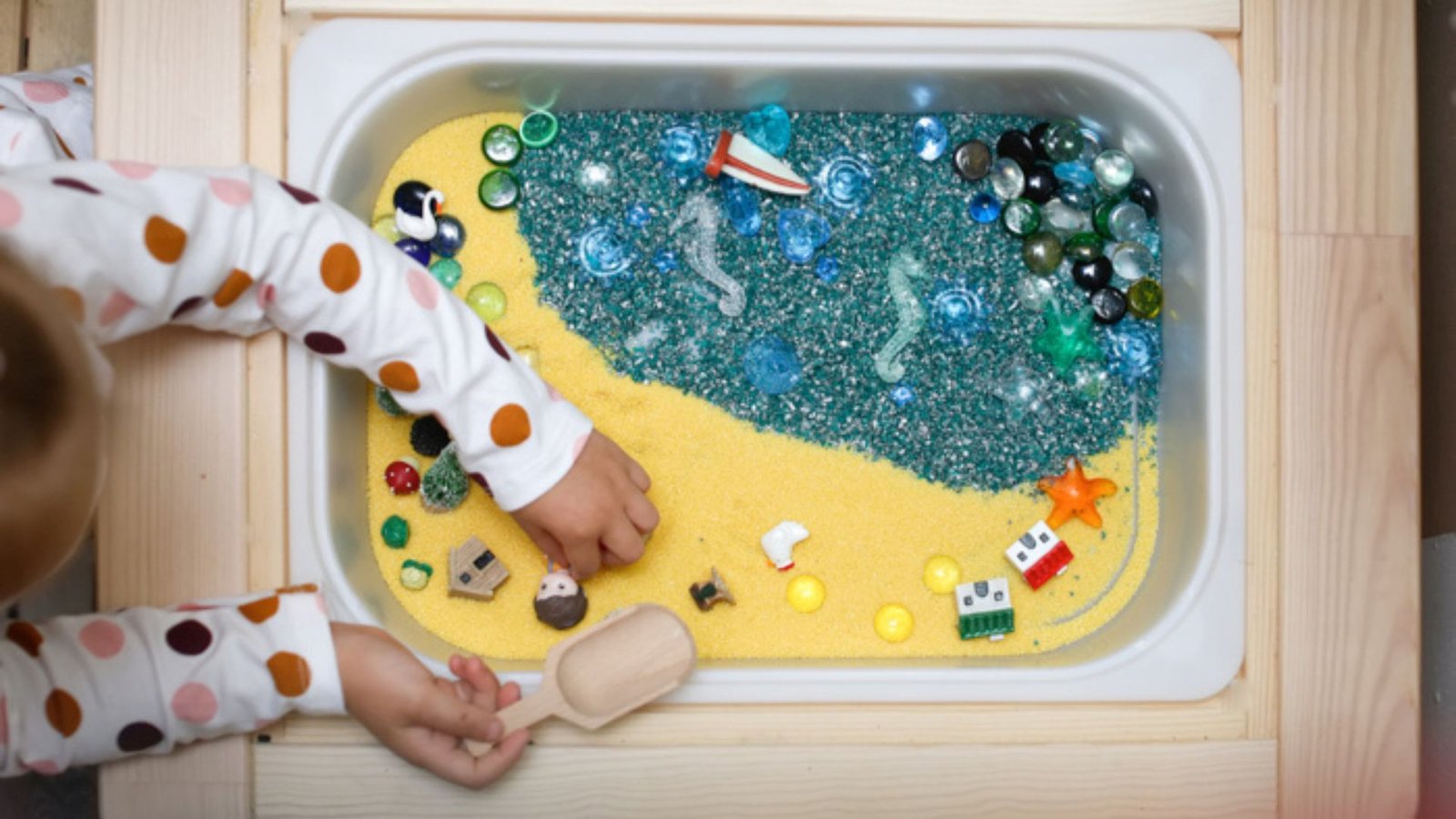
Set up a small area on the floor with natural items your baby can safely touch and hold. Think smooth river rocks, large seashells, small pumpkins, pieces of tree bark (check for splinters first), and non-toxic plants like spider plants. Place everything in a shallow basket or directly on a blanket.
Your baby will love feeling the different textures. Cool, smooth shells feel completely different from rough bark or bumpy pumpkin skin. This simple setup teaches your little one that the world is full of interesting objects, each with its own unique feel.
Watch as your baby picks up each item, turns it over, and maybe even tries to stack them. You’re helping build hand strength and teaching early science concepts about the natural world. Name each object as your baby interacts with it to build vocabulary, too.
Water Play with Sponges
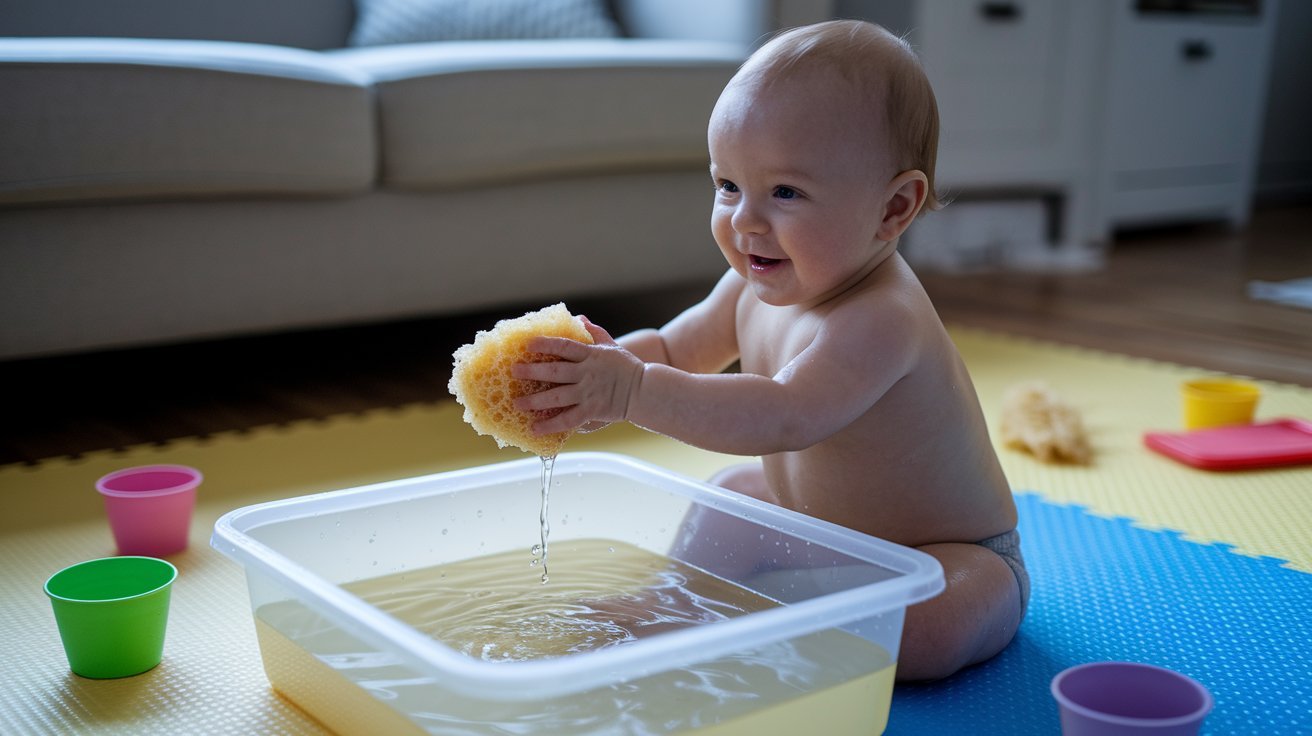
Natural sea sponges are perfect for water play at this age. Fill a small bin with an inch or two of warm water and drop in a sea sponge. Show your baby how it soaks up water and gets heavy, then watch their eyes light up when they squeeze it and water pours out.
This is one of those activities for 10-month-old babies that holds attention for a surprisingly long time. The cause-and-effect is clear and immediate. Squeeze the sponge, and water comes out. Let it float; it drifts around the bin. Push it under, bubbles come up.
Always stay right next to your baby during water play. You can add small cups or plastic containers to make it even more interesting. Your baby is learning about volume, weight, and how materials change when they get wet, all while having a blast.
Mirror Play for Standing Practice
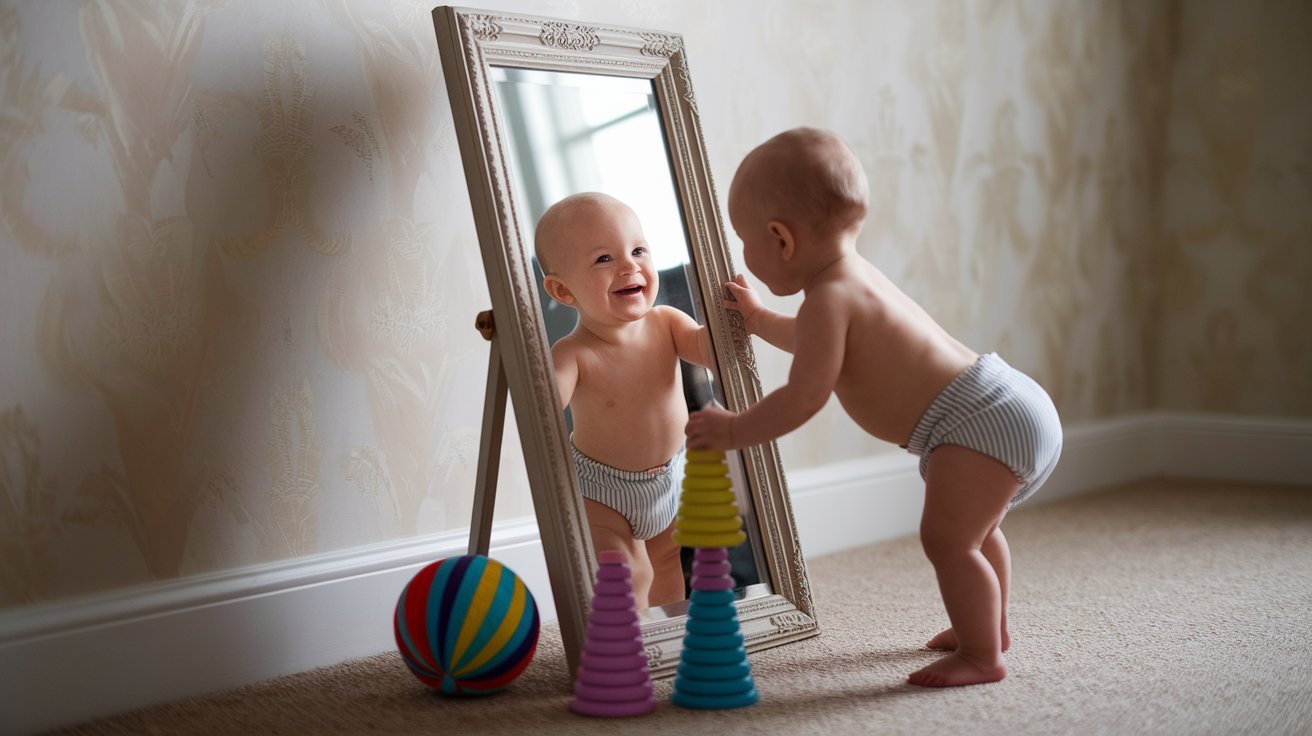
Place a sturdy floor mirror against the wall where your baby can pull up to stand. Put interesting toys on the mirror’s bottom edge, stacking cups, simple puzzles, or a ball drop toy. Your baby will work on standing while being captivated by their own reflection.
Mirrors are magical for babies this age. They don’t fully understand it themselves yet, but they’re fascinated by the “other baby” looking back. This makes standing practice feel like play instead of work.
As your baby stands and plays, they’re strengthening leg muscles and improving balance. They’re also starting to recognize their own features and expressions. Try making funny faces together in the mirror. Your baby will probably try to copy you, which builds social skills, too.
Coloring Introduction
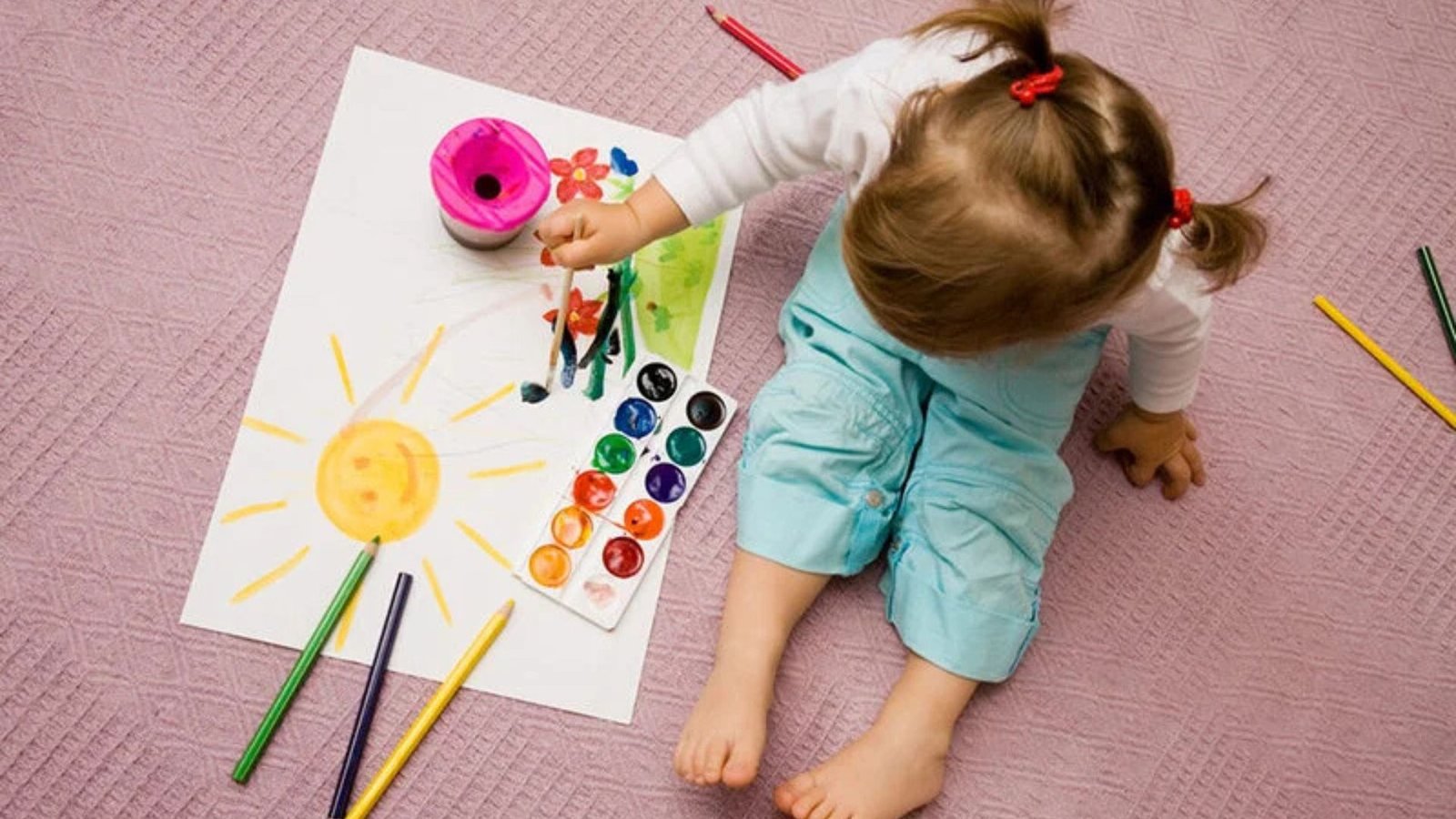
Your baby can start experiencing crayons now, though don’t expect actual drawings. Use painter’s tape to secure paper to a table or highchair tray. Give your baby one thick crayon and let them interact with making marks.
Most 10-month-olds will hold the crayon in their fist and bang it on the paper. Some might make a few random marks. Both are perfect at this age. The goal isn’t creating art, it’s getting comfortable with holding a writing tool and seeing that it leaves a mark.
Keep sessions short, maybe five minutes. Your baby might be more interested in eating the crayon or tearing the paper, and that’s okay. You’re planting seeds for future writing skills. The painter’s tape keeps the paper in place so your baby can focus on the crayon instead of chasing paper around the table.
Simple Tower Building
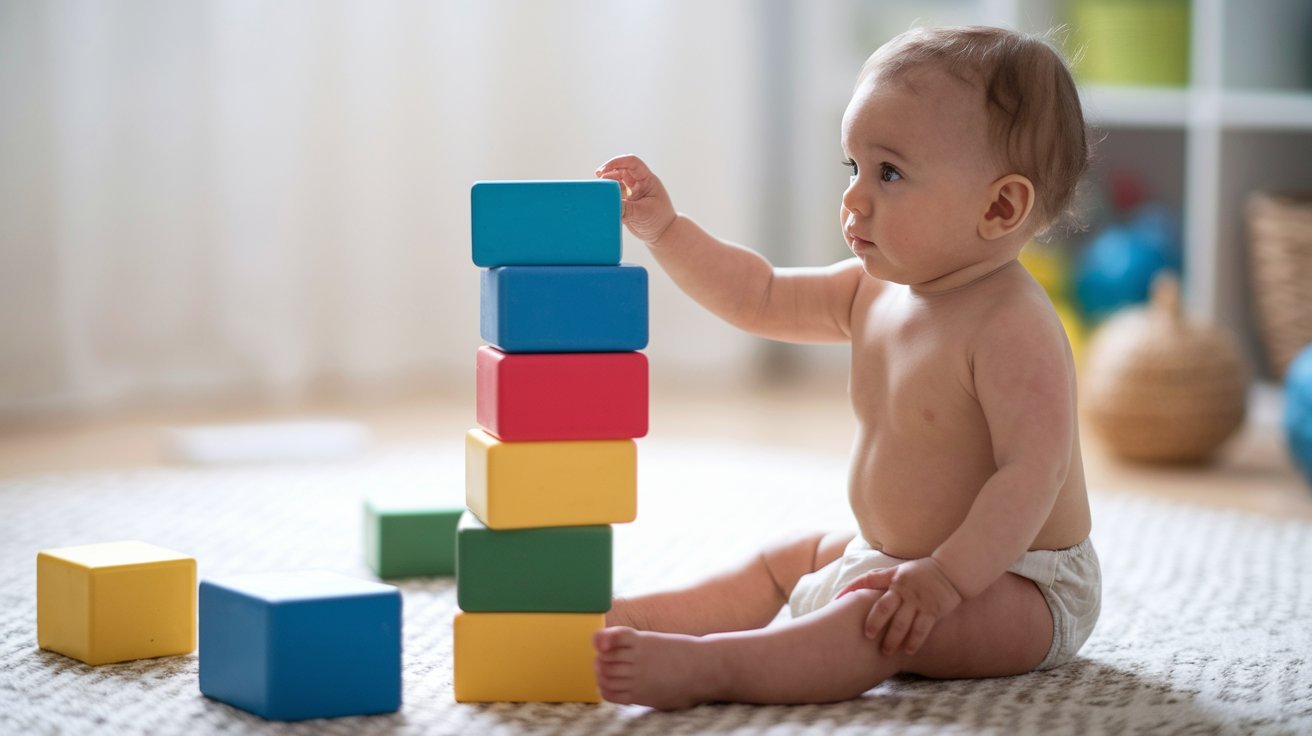
Start with just two or three large blocks or containers. Show your baby how to stack one on top of another, then let them try. Don’t worry if they’d rather knock down your tower instead; that’s learning, too.
Use objects that are easy to grip, like cardboard boxes, plastic food containers with lids, or large wooden blocks. Your baby is figuring out balance, spatial relationships, and hand control. When the tower falls, they’re learning about gravity and cause-and-effect.
Try different combinations as your baby gets better at stacking. Can they stack three blocks? What about putting a small container inside a bigger one first, then stacking something on top? These activities for 10-month-old babies teach early math concepts through simple play.
Physical Activities for 10-Month-Olds
Movement activities help your baby build strength, coordination, and confidence in their growing physical abilities.
Obstacle Course Play (Roadblocks)
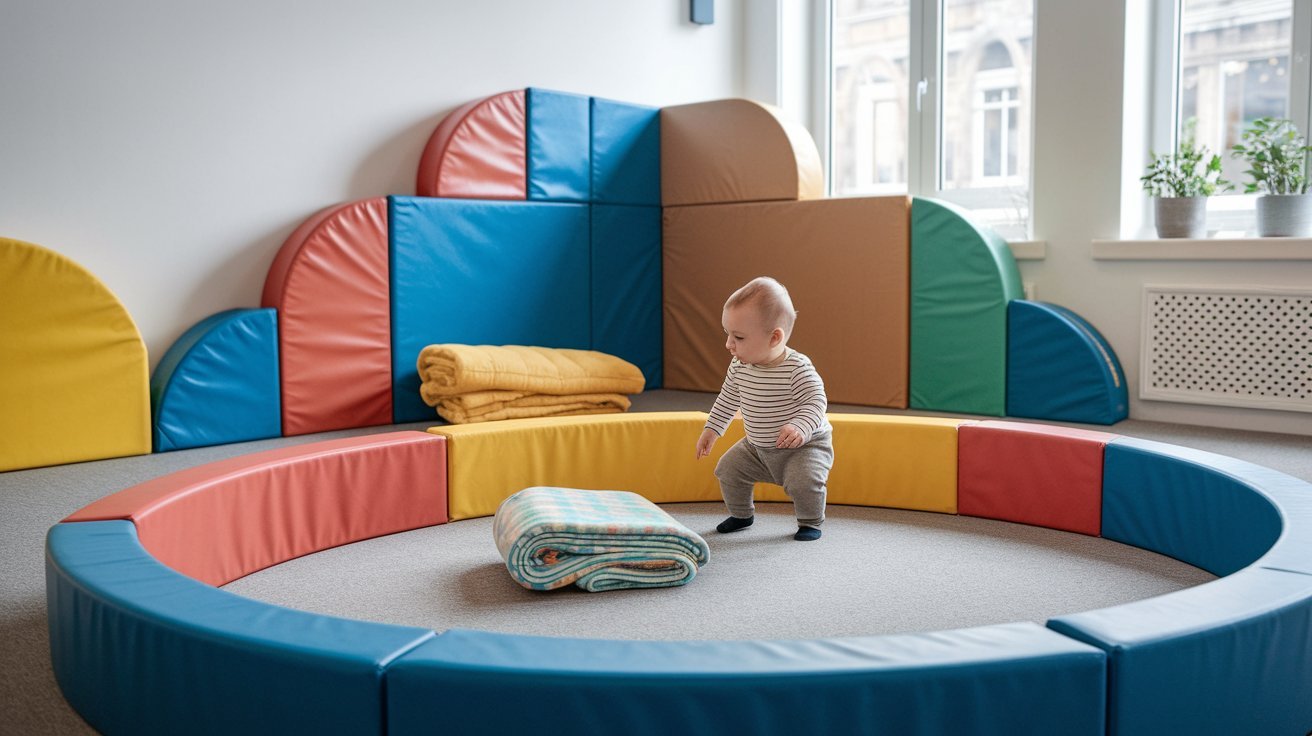
Create a simple path using couch cushions, rolled blankets, and sturdy cardboard boxes. Make it safe and low to the ground. Your baby will crawl over, around, and through these soft obstacles, solving little problems along the way.
The beauty of obstacle courses is watching your baby think. Should they crawl over this pillow or go around it? How do they get through this tunnel made from a big box? Each decision builds problem-solving skills and spatial awareness.
Change the setup every few days to keep it interesting. Always use soft materials and stay close to your baby if needed. Remove anything that could tip over or trap them. This physical play tires out active babies while making them stronger and more coordinated.
Standing Activities
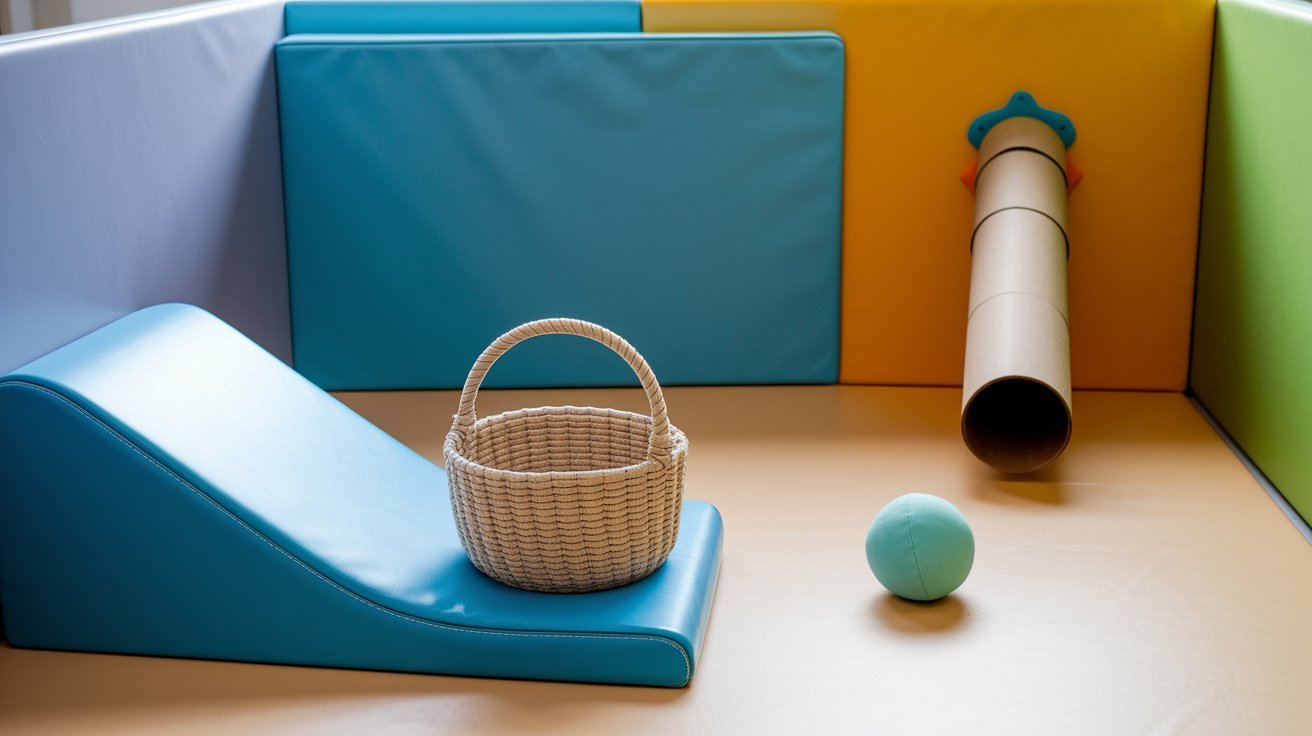
If your baby is pulling up to stand, try a simple catch game. Stand a few feet away and gently roll a soft ball toward them. They’ll probably plop down to catch it, which is fine. You can also set up a real-life ball drop, a cardboard tube taped to the wall at their standing height with a basket at the bottom.
Standing activities feel like a game, but they’re serious work for developing leg muscles. Your baby is learning to shift weight, maintain balance, and coordinate their hands while standing. Each successful catch or dropped ball brings a huge sense of accomplishment.
Keep these sessions short since standing is tiring. Five to ten minutes is plenty. Let your baby decide when they’re done. The hand-eye coordination they’re building now will help with everything from feeding themselves to catching a ball as they grow.
Climbing Practice
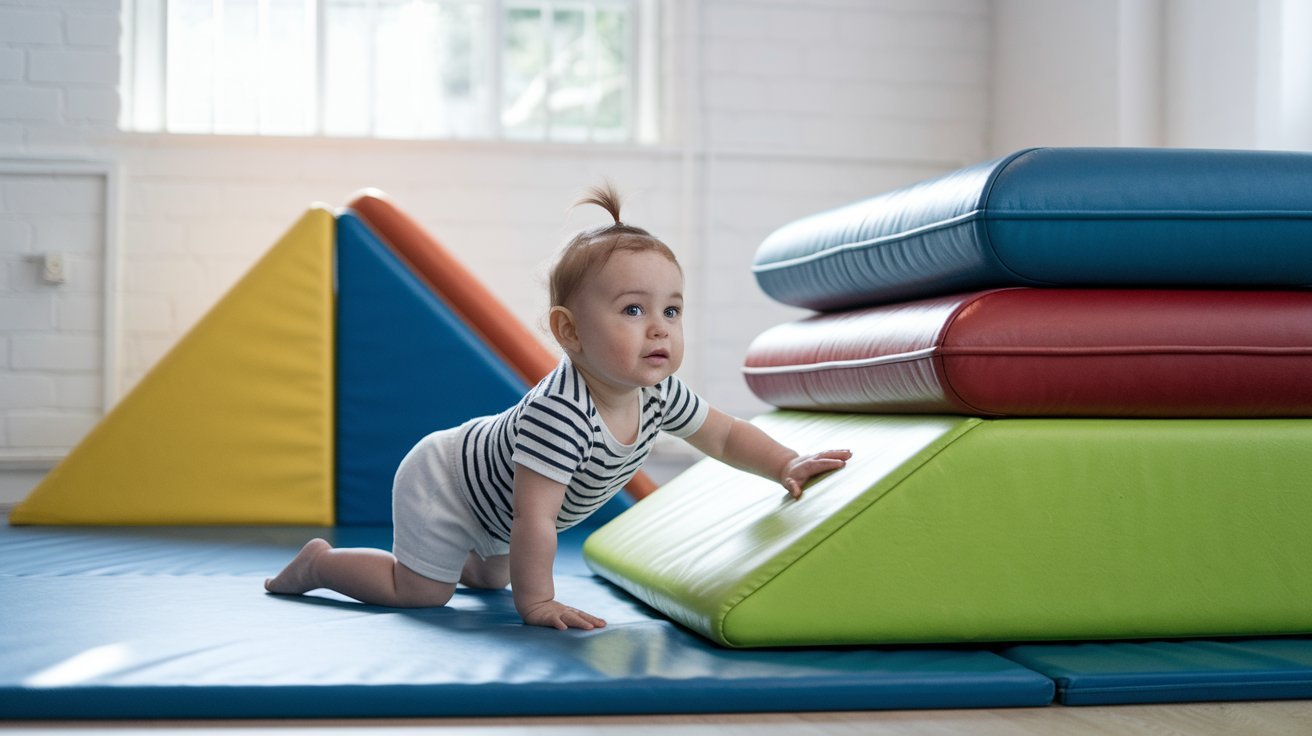
Pile up three or four couch cushions or firm pillows to create a small climbing hill. Help your baby crawl up and over this soft mountain. Start with just one or two cushions and add more as they get confident.
Climbing builds incredible strength in arms, legs, and core muscles. Your baby has to plan their movements and adjust their body position to get over obstacles. It’s challenging but safe since the landing is always soft.
Watch your baby’s face when they make it over the top, op pure joy. Start easy and let your baby show you when they’re ready for bigger challenges. Some babies love climbing right away, while others need more time. Follow your baby’s lead and always supervise closely to prevent falls.
Sensory Searching Activities
These hands-on experiences let your baby observe new textures, sounds, and sensations through safe exploration.
Kitchen Searching (Pots and Pans)
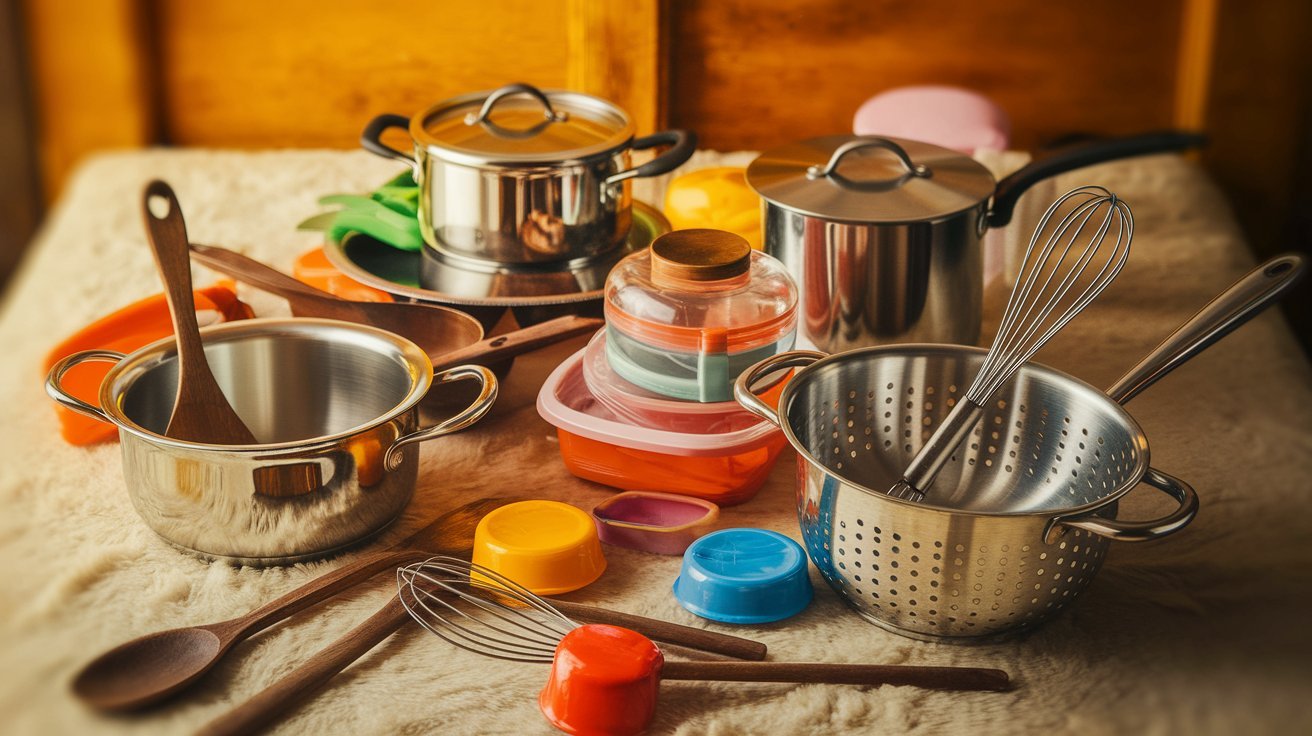
Pull out your pots, pans, wooden spoons, and a metal whisk. Let your baby bang them together, stack them, and interact with how each one sounds different. A metal spoon on a pot sounds nothing like a wooden spoon on plastic.
This might be noisy for you, but it’s music to your baby. They’re learning that different materials make different sounds. They’re also building hand strength and coordination with every bang and clang.
Add a colander for your baby to look through the holes, or plastic containers in different sizes for stacking. Kitchen items are some of the best tools for learning because they’re real objects from your daily life. Your baby feels included in your world while exploring texture, weight, and sound.
Gelatin Play
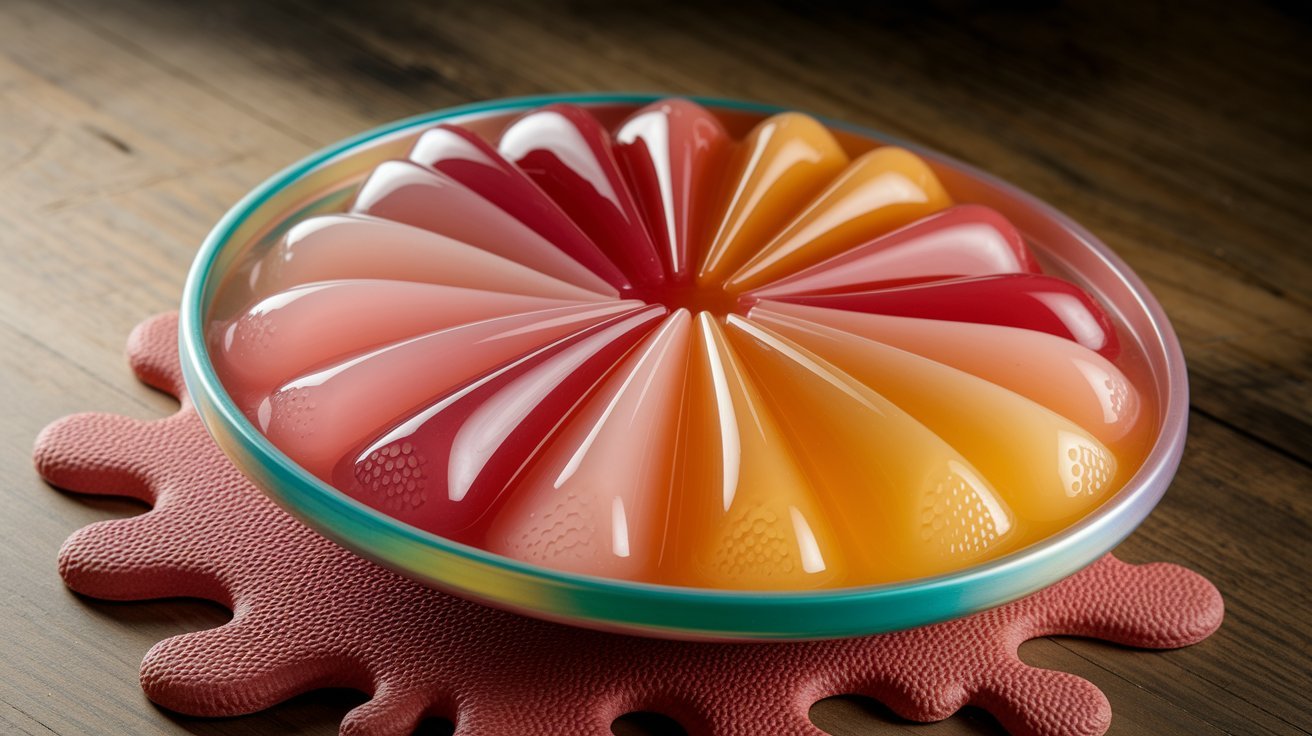
Mix up a batch of unflavored gelatin according to package directions and let it set in a shallow pan. Once it’s firm, put your baby in the highchair and let them squish, poke, and break apart this wobbly substance.
Gelatin has a unique texture that babies either love or find completely bizarre. Either reaction is valuable. Your baby is learning that some things are solid but squishy, and that they can change the shape of materials with their hands.
Put a towel or splat mat under the highchair because this gets messy. The cleanup is worth it for the sensory experience. Keep the session sh, about ten minutes, and be ready to wash hands and face afterward. Store any leftover gelatin in the fridge and use it again within a day or two.
Edible Play Dough
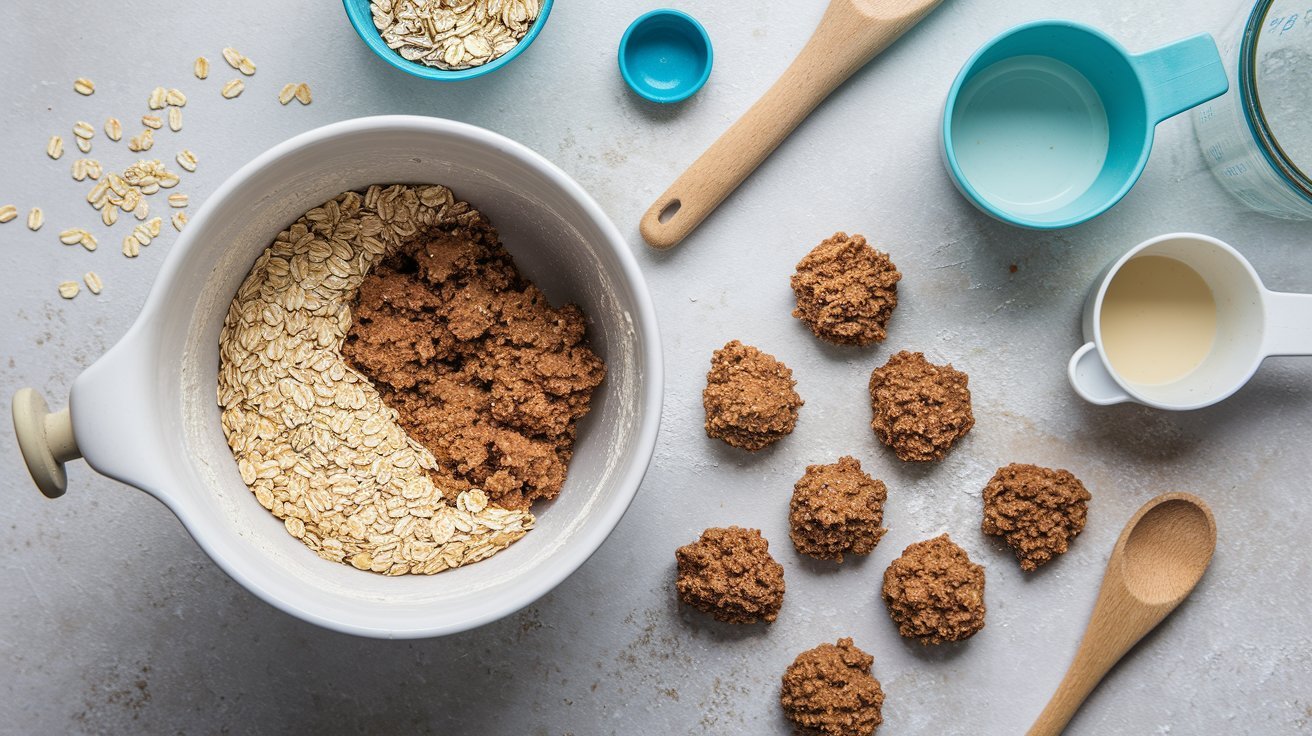
Mix oats, flour, and water to create a simple dough your baby can safely taste. Use equal parts flour and water, plus some oats for texture. Let your baby help pour ingredients into a bowl and stir with you.
This dough won’t be as smooth as store-bought play dough, but that’s fine. Your baby can squish it, tear it, and poke it with their fingers. Since all the ingredients are edible, you don’t have to panic if some ends up in their mouth.
The best part is making it together. Even at 10 months, your baby can participate by watching, touching ingredients, and helping stir. They’re learning that we can mix things to create something new.
Searching Differences
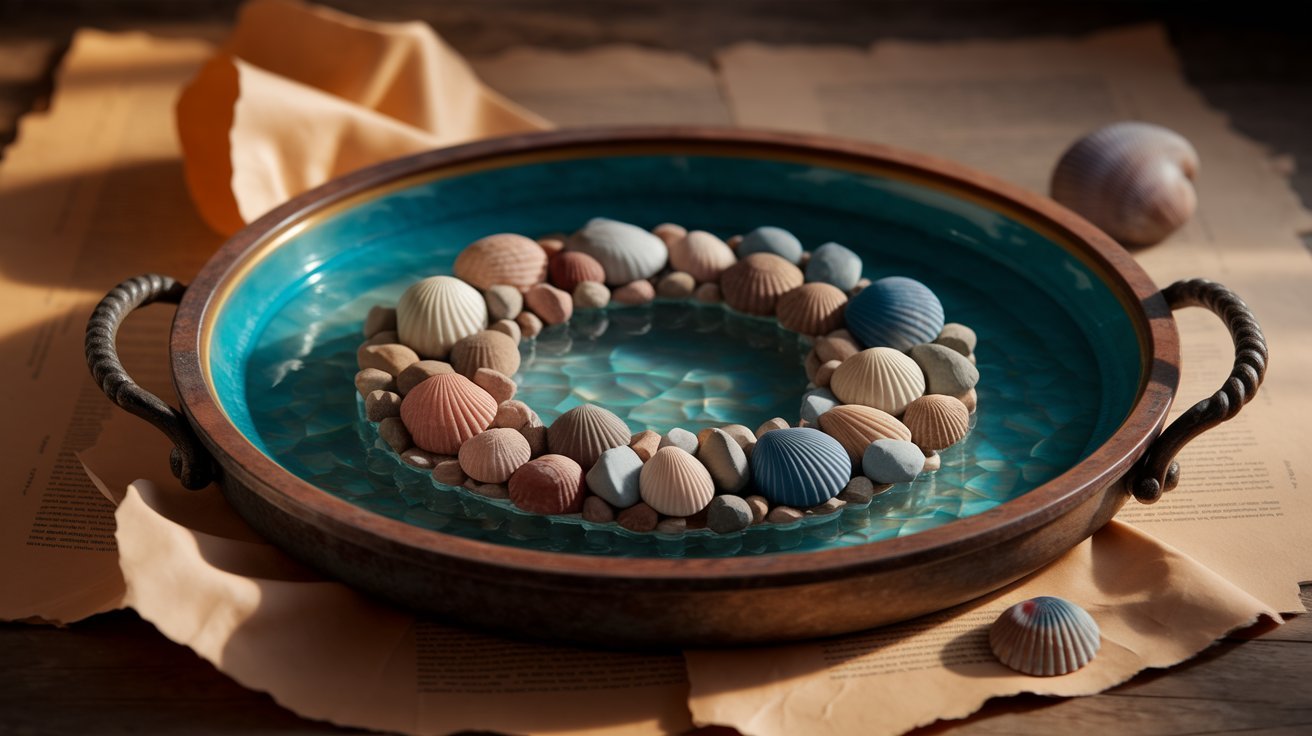
Put out several rocks and shells. Let your baby handle them and feel the differences. Then add a small container of water and show how the colors change when objects get wet. Dry rocks look dusty, but wet rocks might show streaks of color or shine.
This simple activity teaches observation skills. Your baby is learning to notice details. This shell has bumps; that rock is smooth. When water is added, everything looks different. These are early science concepts presented in a hands-on way.
Talk about what you see together. “This rock feels rough. This shell is smooth and shiny.” Your words help your baby connect what they’re feeling with language. Let them splash the objects in the water if they want. The exploration matters more than keeping things tidy.
Sensory Bottles
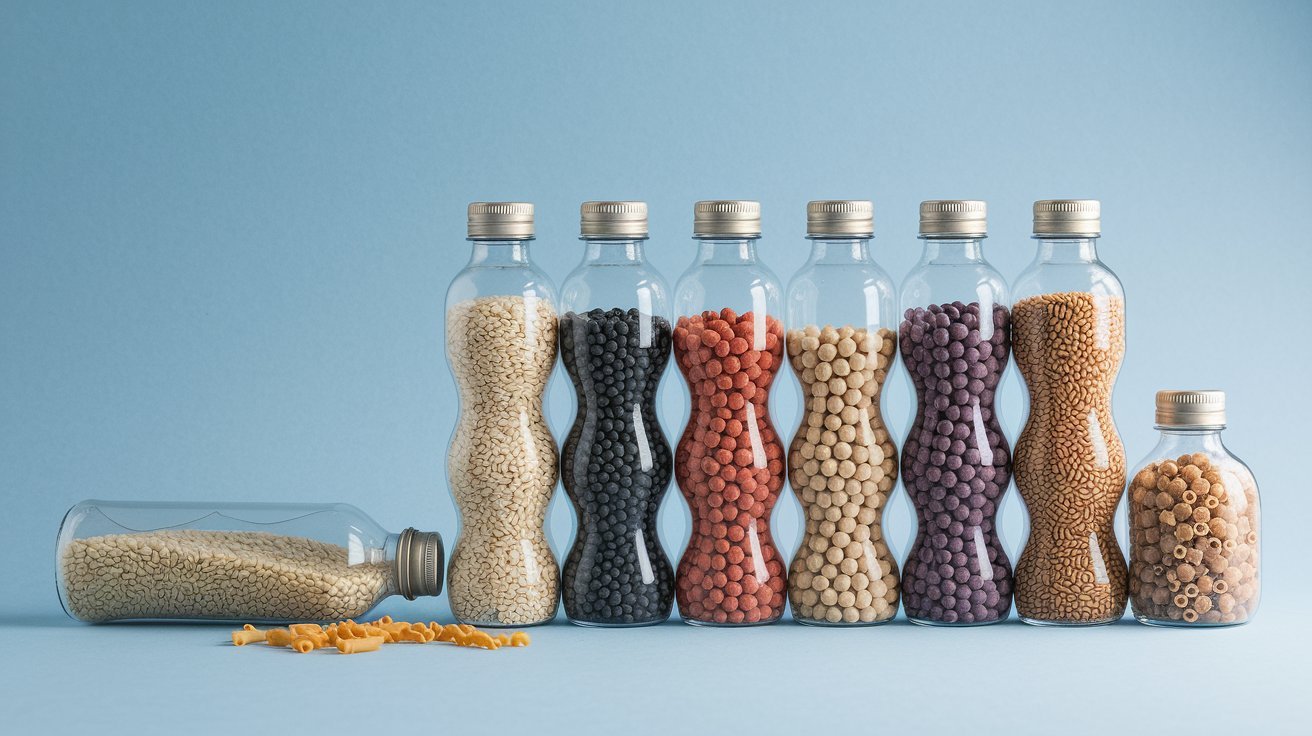
Fill clear plastic bottles with different materials: rice in one, dried beans in another, small pasta shapes in a third. Seal the lids tightly with hot glue or strong tape so they can’t come off. Your baby can shake them, roll them, and listen to different sounds.
Each bottle creates a special sound and moves differently. Rice flows smoothly and makes a soft sound. Beans are louder and clunkier. Pasta pieces click and slide. Your baby is learning to tell the difference between sounds and predict what will happen when they shake each bottle.
These bottles work as simple rainmakers, too. Show your baby how to slowly tip the bottle and watch the contents flow from one end to the other. They’re building grip strength, learning cause-and-effect, and experiencing different sensory inputs all at once.
Everyday Activities and Real-World Learning
Daily routines and common household items provide rich learning experiences when we slow down and let babies find.
Spoon Searching
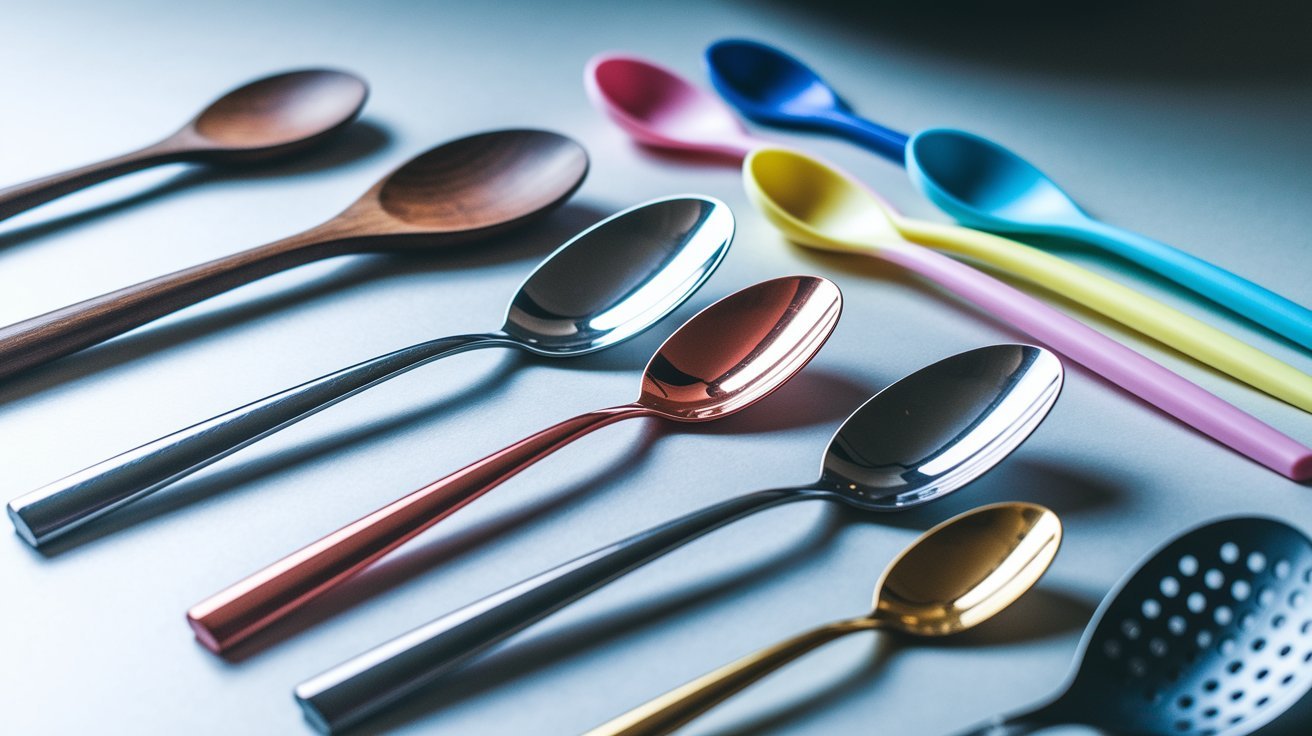
Gather different types of spoons: wooden, metal, plastic, slotted, and solid. Let your baby bang them on the table, look at their reflection in shiny metal spoons, and search for how each one feels and sounds different.
Spoons are perfect for learning because they’re safe, easy to grip, and available in every home. A wooden spoon sounds different from a metal one when tapped on a table. A slotted spoon has interesting holes to poke fingers through. Shiny spoons show a funny reflection of your baby’s face.
This simple exploration teaches comparison, cause-and-effect, and observation skills. Your baby is learning that even similar objects can have important differences. Put out three or four spoons and let your baby lead the exploration.
Business Supplies Exploration
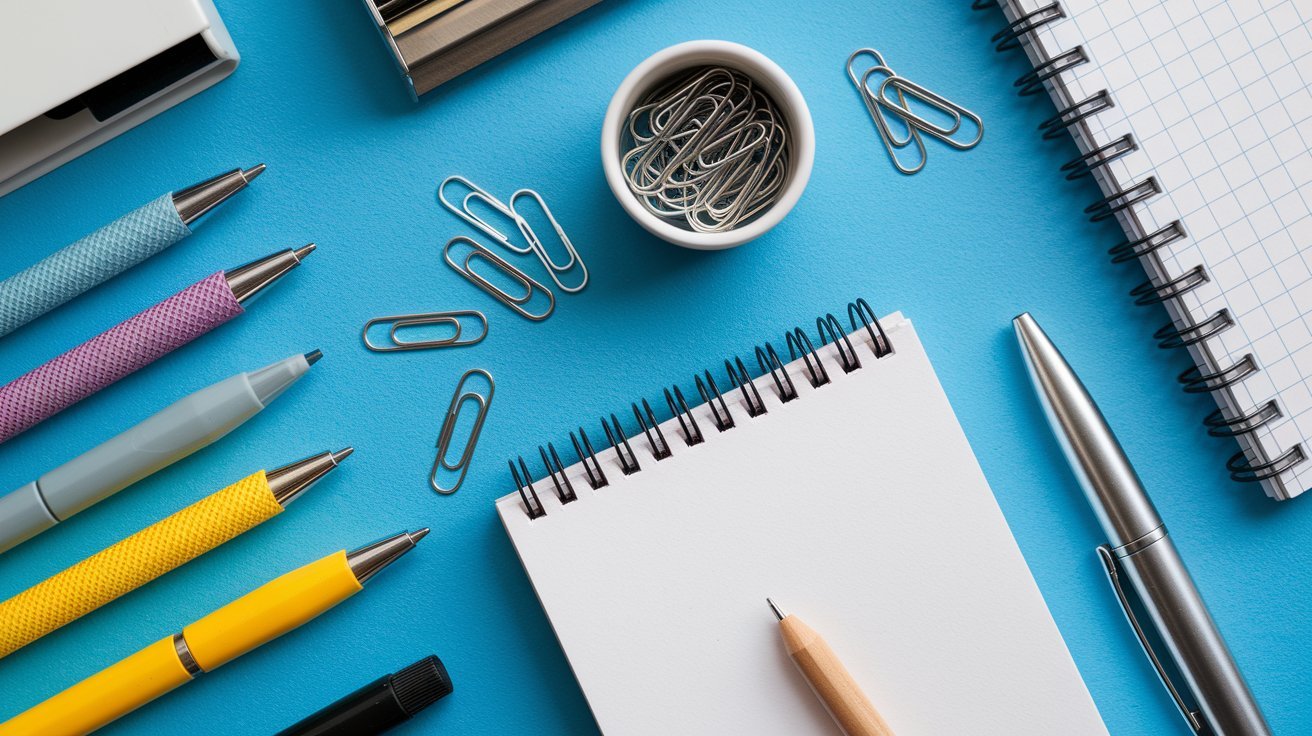
Under close supervision, let your baby interact with adult items like pens (with caps), a stapler (unloaded), paper clips in a container they can shake, or a small notepad. Stay right next to them and show how each item works.
Babies are fascinated by things they see adults using. These items feel important and grown-up. Removing pen caps builds fine motor skills and the pincer grip. Shaking a container of paper clips creates sound and teaches cause-and-effect.
Safety is key here. Never leave your baby alone with small objects. But supervised exploration of real-world items teaches valuable lessons. Your baby learns that different objects have different purposes.
Tape Play
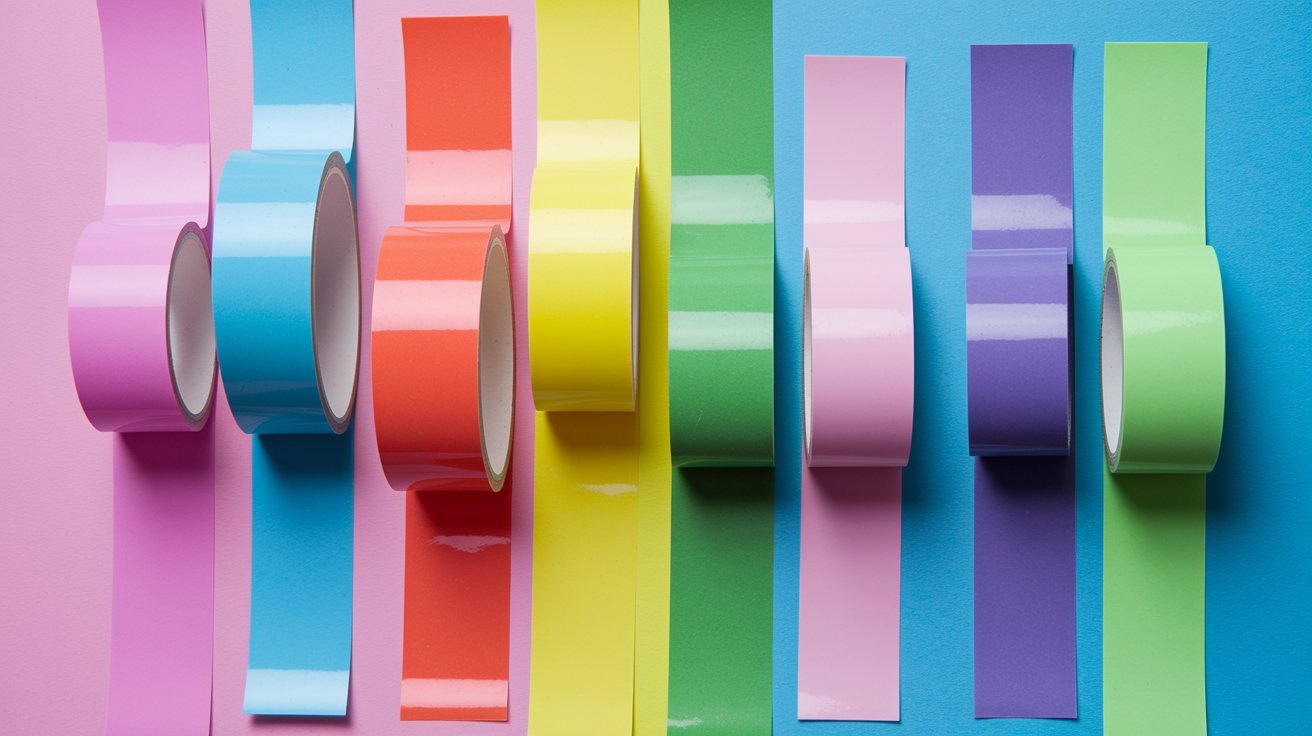
Painter’s tape is perfect for baby play because it’s low-stick and safe. Put strips of tape on your baby’s highchair tray or a table. Show them how to peel it up, stick it down again, and pull it off.
This simple activity builds finger strength and coordination. Peeling tape requires your baby to use their thumb and fingers together in a precise way. They’re learning about sticky and non-sticky surfaces, and experiencing cause-and-effect: pull the tape nd it comes up.
Your baby might stick tape on their hands, the table, or even try to stick pieces together. All of this is learning. They’re experimenting with materials and figuring out how things work. Keep the tape pieces large enough that they’re not a choking hazard, and always supervise.
Outdoor Activities for 10-Month-Olds
Fresh air and natural environments provide unique sensory experiences that support overall development and well-being.
Grass Exploration
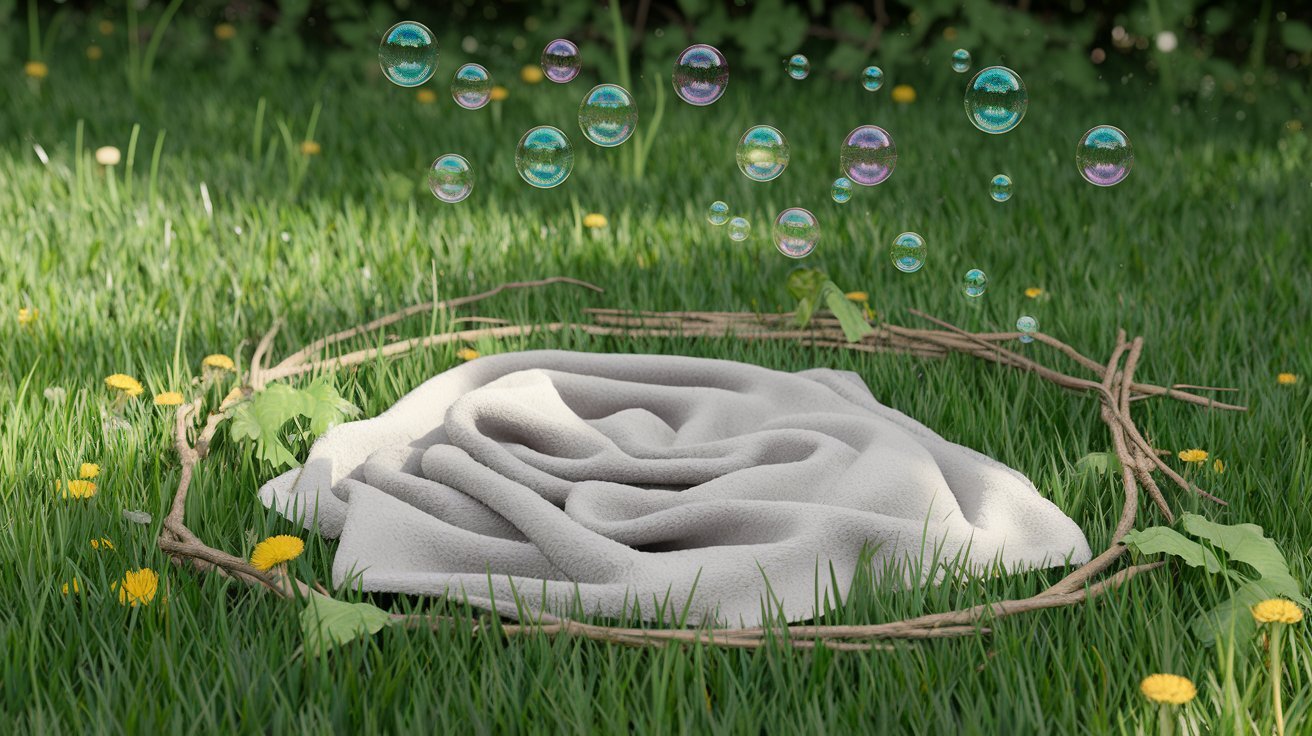
Spread a blanket in your yard and let your baby feel the grass with their hands and feet. Help them find interesting things like leaves, sticks, or dandelions. Bring bubbles outside and blow them over the grass for your baby to watch and try to catch.
Grass has a unique texture that many babies need time to get used to. Some love it immediately, while others find it tickly and strange. Both reactions are normal. The outdoor environment offers different sounds, sights, and smells than indoors.
Let your baby take their time exploring. They might pick individual blades of grass or grab handfuls. They might find a stick and bang it on the ground. This free exploration teaches them about the natural world while building curiosity and observation skills.
Tips for Successful Play Sessions
Playtime with your 10-month-old is less about doing it “right” and more about enjoying the moment together.
- Timing matters: Watch your baby’s mood before starting activities. A well-rested, fed baby will engage much better than a tired or hungry one.
- Start simple: Offer one or two activities at a time, not five. Too many choices overwhelm babies and lead to more fussing than playing.
- Follow their lead: If your baby ignores your carefully planned activity but becomes fascinated with the cardboard box it came in, go with it. That box is teaching something valuable.
- Stay close: Always supervise activities for 10-month-old babies, especially those involving small objects, water, or climbing.
- Age-appropriate only: Check that all materials are safe for mouthing since everything goes in the mouth at this age.
- Check for hazards: Remove items smaller than a toilet paper tube, as these pose choking risks. Avoid coins, buttons, and small toy parts.
- Make items accessible: Set up a low bookshelf or basket where your baby can reach toys independently. This builds confidence and decision-making.
- Rotate activities: Put half the toys away each week and bring out the other half. This keeps things fresh without buying new items.
- Create easy storage: Use baskets or bins for quick cleanup. Your baby can even help drop items back in containers.
- Expect short attention spans: Ten to fifteen minutes of focused play is great at this age. Multiple short sessions work better than one long one.
- Adapt as needed: If an activity is too hard, simplify it. If it’s too easy, add a challenge. You know your baby best.
- Safety first, always: Scan the play area for hazards before each session. Babies move fast and reach farther than you expect.
- Make it routine: Regular play times help your baby know what to expect and settle into activities more easily.
Conclusion
At 10 months, your baby is in a stage where every touch, sound, plus movement amazes also sparks new learning. Everyday moments are able to turn into big developmental leaps through simple activities such as feeling different textures or banging on pots, or stacking soft containers.
Your baby can thrive beyond elaborate setups. Toys that are expensive are also unnecessary. In point of fact, the very best activities often come out from everyday life, as your baby can crinkle some paper, use safe kitchen tools still, or crawl after a favorite ball now.
Each infant, note, matures at their individual rate. Some are excited to pull up and cruise around. Crawling is still being mastered by others now. Follow along with your child’s interests, showing joy and patience, and celebrating along with their unique phase.
Frequently Asked Questions
What activities should I do with my 10-month-old?
Focus on sensory play with natural objects, simple stacking games, water play, climbing practice with soft pillows, kitchen item exploration, and outdoor time. Choose activities matching your baby’s current abilities and interests for the best engagement and learning.
How do I keep my 10-month-old busy?
Rotate different activities throughout the day, including physical play, sensory exploration, and simple problem-solving tasks. Keep sessions short since attention spans are limited. Let your baby lead the play, and don’t feel pressure to constantly entertain them.
How much playtime does a 10-month-old need?
Babies this age benefit from multiple short play sessions rather than long stretches. Aim for 10-15 minutes of focused activities several times daily, plus plenty of free exploration time. Balance active play with quiet activities and rest periods throughout the day.
What cognitive skills develop at 10 months?
Ten-month-olds are learning object permanence, cause-and-effect, problem-solving, and early communication. They understand simple words, can follow basic directions, and are developing memory skills. They’re also learning spatial relationships through stacking and fitting objects together.
Are outdoor activities important for 10-month-olds?
Yes, outdoor time provides unique sensory experiences, including natural light, fresh air, and different textures like grass and leaves. Even 15-20 minutes outside daily supports development, improves sleep, and helps babies connect with nature from an early age.
